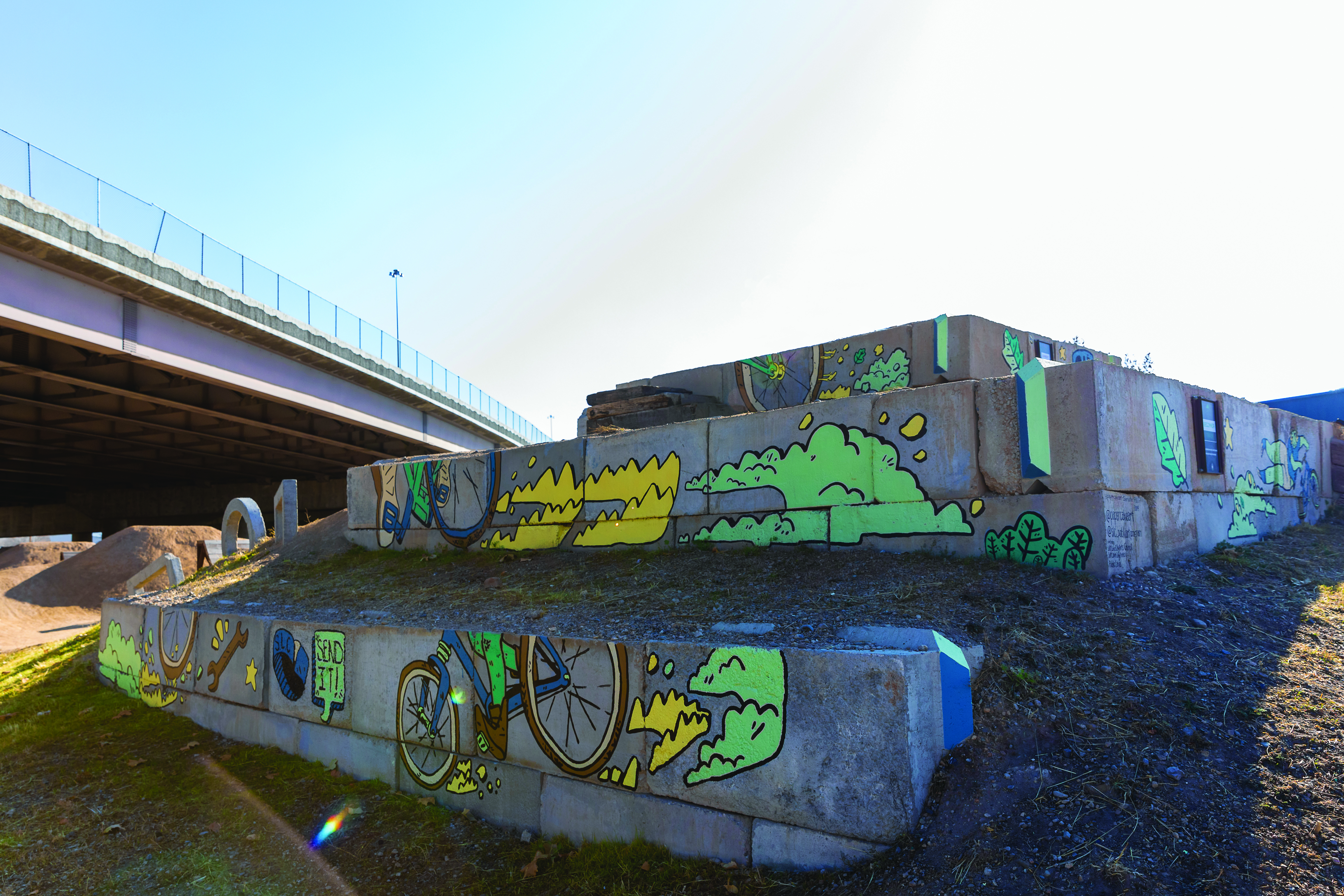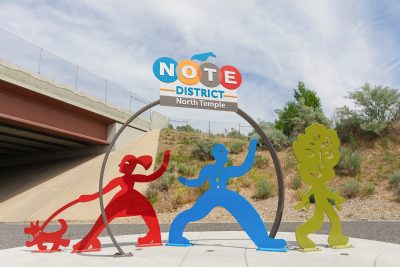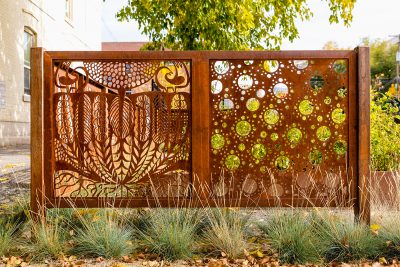
Virtual Public Art Tours During Social Distancing
Art
With the disruption to everyday routine caused by the outbreak of COVID-19 and the heavy-heartedness we feel at the loss of our everyday lifestyles, we have to look for ways to work against the coronavirus blues. Looking at an interesting piece of art or talking to a neighbor is a good place to start, according to Kat Nix, Public Art Program Manager at the Salt Lake City Arts Council. The council provides funding and resources for community art projects. The organization is responding to the “Stay Safe, Stay Home” mandate, says Nix, the public art program assistant, Abby Draper has been creating the virtual art tours on Instagram and online.
Following the organization on Instagram (@SLC_publicartprogram) is one way to get closer to your local community and real people in this time of crisis. “What I love about public art is it helps us to engage in our community in such a deep way,” says Nix. “It allows us to connect with physical space so that it becomes more than just space, but [also] a place that we connect a moment in time with, and we get to learn more about our community through the stories that public art illuminates.” Giving art in Salt Lake a wider audience through Instagram, a platform with over a billion users and an especially art-focused base, is a good step to bringing the multi-generational, diverse population of the valley in touch with local art.
“What I love about public art is it helps us to engage in our community in such a deep way.”

One piece of art from the North Temple neighborhood (NOTE) featured in the tour is larger-than-life, red iguana sculpture, Xochitonal, created by Stephen Tusk (@stephenkesler_tusk) in collaboration with the family-owned Red Iguana Restaurant. The behemoth Xochitonal (Xochitl meaning “flower” and Tonalli “day, heat, soul or spirit” in Nahuatl) is a female creature from Aztec mythology and the keeper of the underworld. She is the seventh obstacle that the soul must overcome in its last trip to arrive at Mictlán (the afterworld). Tusk fabricated the massive iguana in his studio using a multi-step process to mold the intricate scale pattern and the multi-color paint application. The sculpture is included in the @SLC_publicartprogram highlight tour.
As of right now, you can visit “Tour: NOTE” in the highlight section using @SLC_publicartprogram to see works in the NOTE neighborhood. “We only have a few tours currently available to view virtually, but we will be generating more in the coming weeks as a way for folks to continue to connect to public spaces and artwork,” Nix says.
“Public art often succeeds when it is created by the people who live and work in that community, [as] those artists are best equipped to tell a story about that neighborhood.”
The virtual tour is presented in a neighborhood that has a wider cultural flavor compared to other suburbs, including voices from other countries who have settled in these neighborhoods—which, in turn, includes NOTE and the Granary District. “Public art often succeeds when it is created by the people who live and work in that community, [as] those artists are best equipped to tell a story about that neighborhood,” says Nix. “When the arts reflect and celebrate the diversity of our community, residents build a greater understanding and appreciation of different cultures.” Most of the art commissioned for the neighborhoods has an origin story and highlights some of the artist’s cultural traditions, inherited from their families and now shared with the people who also live in their state through their art.
One example of this is of this Jessica Sabogal, a San Francisco–based painter who created a portrait of local artist/activist Ella Mendoza gazing skyward on the northwest corner of 700 West and North Temple. Sabogal is of Colombian-American heritage and named the mural Este Barrio No Se Vende (This Neighborhood Is not for Sale) in 2018, which is included on the city’s virtual tour. Sabogal says of her process, “Every project begins as a research assignment. Who lives in the immediate area of the work I will be creating? What issues are they experiencing that need attention? What voices are being silenced?”
“Art helps us to stay connected. It tells stories about our community in so many different aspects.”

Another artist is Traci O’Very Covey, who graduated from the University of Utah with a BFA degree and studied painting, drawing, illustration and graphic design. In May 2019, she finished Colorful Connection, a public-art installation consisting of steel sculptures, “NOTE District” signage, a vinyl mural utility-box wrap and bridges that enhance the pedestrian/bicycling/automobile experience under the I-15 underpass on North Temple.
These activities are a good way to balance out and remember what the outside world is like (if you tend to clam up in times of stress, looking at the close and familiar can help). Nix also says, “Art helps us to stay connected. It tells stories about our community in so many different aspects. Art can be a powerful means of connection, cathartic to create, a way to engage in and process current challenges, or it can be a welcome reprieve from a very disorienting present.”
Because many people living in the counties around the state only make it into Salt Lake City once in a blue moon, this is an opportunity to further the sharing of art with different communities. Although everyone has limited free time, engaging with the city and state where you live is a worthy way to spend an afternoon. When things get closer to normal, you can also take a nice outside walk or bike ride to appreciate the artwork around the city. In the meantime, take a look at the Instagram and online tours!
Editor’s Note: This article has been updated to reflect the fact that the Salt Lake City Arts Council is not a subsidiary entity of Utah Division of Arts and Museums, which was stated erroneously in the print version of this article.